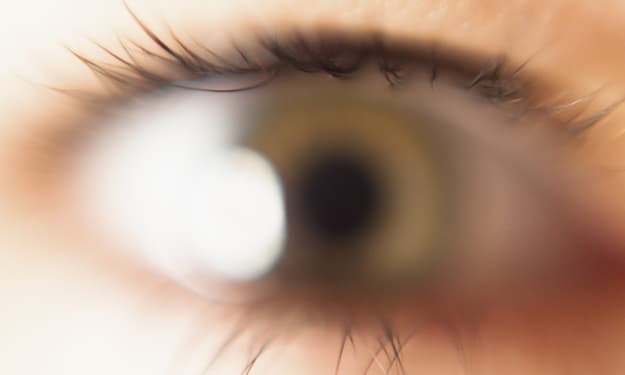Macular Hole Stages: Protect Your Vision with Early Intervention
What Is Macular Hole?

The macular hole is a defect or lesion extending from ILM (internal limiting membrane) deep down to the RPE (retinal pigment epithelium). As the macula is responsible for keeping the central vision intact. Any pathology at the region of macular will lead to central vision loss. Depending upon the macular hole stages, the severity of vision impairment can be graded. It is a condition in which fellow eye can be involved with a risk of other eye involvement at 5 years in around 10% cases The article will discuss the causes, signs and symptoms, macular hole stages and available treatment options, prevention, outlook and prognosis.
What Are The Causes Of Macular Hole?
The macular hole is most common in the female population.
High myope
Vitreomacular traction
History of blunt ocular trauma
Retinal detachment
History of any eye surgery
What Are The Signs And Symptoms Of Macular Hole?
In full-thickness macular patients may present with central vision loss, however in partial-thickness macular hole complaints of metamorphopsia may be noted.
What Are The Macular Hole Stages?
In the past the classification of macular hole stages was made on the basis of VMT (vitreomacular traction), as it is believed to be one of the leading causes of macular hole. However, a new classification on the basis of OCT has been postulated.
Stage 0: It denotes the oblique foveal vitro retinal traction before the appearance of clinical picture (IVTS = VMA (vitreomacular adhesion)
Stage 1: This stage is subdivided into two types.
1a: Impending macular hole (IVTS = VMT (vitreomacular traction). In this stage there is flattening of foveal depression with underlying yellow spot.
1b: occult macular hole. It is seen as a yellow ring. The yellow ring appearance is due to displacement of photoreceptors in centrifugal pattern.
In stage 1, the visual loss is usually not significant.
Stage 2: Small full thickness hole (IVTS=small or medium FTMH with VMT)
It consists of macular hole of less than 400 ums in diameter. The defect is central so the vision is affected centrally. In this stage the patient complaint of the straight lines appearing as bend or distorted.
Stage 3: Full size macular hole (IVTS= medium or large FTMH with VMT). The full thickness macular hole is more than 400um in diameter. The hole appears as red base with yellow white dots in the center. The visual acuity may be reduced to 6/60.
Stage 4: Full size macular hole with complete PVD (IVTS= small, medium or large FTMH without VMT).
Clinically it is difficult to distinguish from stage 3. The posterior vitreous is completely detached. In this stage, the macular hole is the largest and most severe. There is a significant loss of vision, and a blind spot may be present in the central vision.
How Is A Macular Hole Diagnosed?
The diagnosis of macular hole stages is made on slit lamp ophthalmoscopy. However other tests include.
Amsler grid: The test will signify central distortion.
The Watzke- Allen test: This test is performed by projecting a vertical and horizontal beam of light with slit lamp. Patient with macular hole will report that the beam is thinned or broken.
OCT (optic coherence topography): It is the most useful test for the diagnosis and staging of macular hole.
FAF (fundus autofluorescence): The test shows markedly hyperfluorescent foveolar spots in stage 3 and 4 and punctate fluorescence in stage 2.
FA (fluorescence angiography): This test signifies macular hole as a window defect due to displacement of xanthophyll’s and RPE atrophy.
Is There Any Treatment For Macular Hole?
The treatment for a macular hole depends on the stage and severity of the condition. In some cases, such as stage 1 macular hole may heal on its own. However, in more severe cases, surgery may be necessary. Surgery is performed in stage 2 or more severe cases. Vitrectomy surgery, which involves removing the vitreous gel and replacing it with a gas bubble, may be performed to repair the macular hole
How To Perform Macular Hole Surgery?
The macular hole surgery consists of vitrectomy together with ILM (internal limiting membrane peeling) with the help of a dye. Induction of PVD is done to remove tractional forces. Gas tamponade is implanted in place of the vitreous. After the surgery patient is advised to lie in face down position
What Is The Prognosis Of Macular Hole Surgery Prognosis?
The macular hole is usually healed up to 100% of the cases. However visual improvement may take months in 80-90% eyes. the visual outcome is 6/12 or better in 65% of the cases, while a worse prognosis is labeled in 10% of cases.
How Is The Macular Hole Surgery Recovery?
The time of recovery depends upon the stage of the macular hole and early surgical intervention.
What Are The Options For Macular Hole Treatment Without Surgery?
For more details click here
About the Creator
sadia ayaz
My name is Dr. Sadia Ayaz and I am an ophthalmologist and eye surgeon. My medical degree is from Pakistan, I have done FCPS-1 / IMM from the College of Physicians and Surgeons Pakistan.
Enjoyed the story? Support the Creator.
Subscribe for free to receive all their stories in your feed. You could also pledge your support or give them a one-off tip, letting them know you appreciate their work.





Comments
There are no comments for this story
Be the first to respond and start the conversation.